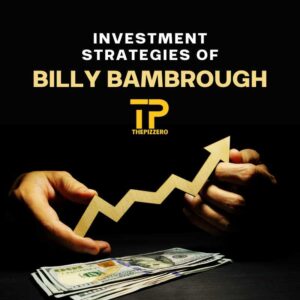Building Resilience: Safeguarding Financial Positions

In an era marked by rapid economic shifts and unforeseen challenges, building resilience into your financial strategy is more crucial than ever. Financial resilience—the ability to withstand and recover from financial shocks—is not just about safeguarding assets; it’s about ensuring long-term sustainability and growth.
This comprehensive guide explores practical strategies for individuals and businesses aiming to fortify their financial positions against the unpredictabilities of the market.
Table Of Contents
- 1 Understanding Financial Resilience
- 2 Strategies for Building Financial Resilience
- 2.1 Establish a Strong Emergency Fund
- 2.2 Diversify Income Sources and Investments
- 2.3 Minimize Debt and Manage Liabilities
- 2.4 Foster Financial Literacy and Awareness
- 2.5 Implement Robust Financial Planning and Analysis (FP&A)
- 2.6 Cultivate a Culture of Agility and Adaptability
- 2.7 Prioritize Insurance and Protection Strategies
- 2.8 Build and Maintain Strong Relationships
- 3 Conclusion
Understanding Financial Resilience
Financial resilience can be likened to a buffer against storms. It’s the strength to face financial downturns without derailing your or your business’s fiscal health and strategic objectives. This resilience is crucial for navigating the highs and lows of economic cycles with confidence and security.
For individuals, financial resilience involves having the resources and planning in place to handle job losses, medical emergencies, or sudden expenses without plunging into debt. For businesses, it means being able to endure economic downturns, industry disruptions, or loss of revenue without compromising on operations or objectives.
Cultivating a Strong Financial Foundation
Cultivating a strong financial foundation to build resilience can also involve leveraging diverse investment tools, such as commercial mortgage-backed securities (CMBS).
CMBS are securities or bonds backed by mortgage loans on commercial properties, not dissimilar to their residential counterparts but focused on properties like offices, malls, and hotels. This investment can serve as a hedge against inflation and market volatility, contributing to a resilient financial strategy.
By including CMBS in a well-rounded portfolio, investors and businesses can spread risk more broadly across different asset classes, enhancing their ability to withstand financial shocks while still aiming for growth.
Strategies for Building Financial Resilience
Establish a Strong Emergency Fund
An emergency fund acts as a financial safety net designed to cover expenses during hard times without the need to dip into investments or take on high-interest debt.
For individuals, financial advisors often recommend setting aside three to six months’ worth of living expenses. Businesses, on the other hand, should aim for a reserve that covers at least six months of operating costs, depending on their size and volatility of their industry.
Diversify Income Sources and Investments
“Don’t put all your eggs in one basket” is timeless advice for a reason. Diversification spreads risk across different assets or income streams, making you less vulnerable to a single point of failure. For individuals, this might mean investing across a mix of stocks, bonds, and real estate, or even pursuing side hustles. Businesses can look into expanding their product lines, entering new markets, or investing in ventures unrelated to their primary industry.
Minimize Debt and Manage Liabilities
High levels of debt can cripple both personal and business finances, especially during economic downturns. Work towards paying off high-interest debts as soon as possible while avoiding taking on new debt unless it’s essential and sustainable. Having a solid plan for debt management, including renegotiating terms if necessary, can provide breathing room in tough times.
Foster Financial Literacy and Awareness
Understanding financial concepts, market trends, and economic indicators empower you to make informed decisions. Regularly educate yourself or your team about financial management, investment strategies, and economic forecasting. This knowledge is a powerful tool for anticipating changes, managing risks, and identifying opportunities.
Implement Robust Financial Planning and Analysis (FP&A)
For businesses, FP&A involves forecasting, budgeting, and analyzing financial performance to support strategic decision-making. A strong FP&A function helps businesses anticipate financial challenges, adapt strategies accordingly, and allocate resources more efficiently. It also involves regular scenario planning to prepare for various market conditions.
Cultivate a Culture of Agility and Adaptability
Resilience is as much about mindset as it is about financial buffers. Encourage a culture—be it in your personal life or within your organization—that embraces change, learns from setbacks, and views challenges as opportunities. Agility in decision-making and flexibility in strategy can significantly enhance your capacity to respond effectively to unforeseen events.
Prioritize Insurance and Protection Strategies
Insurance is a critical component of a financial resilience plan, offering protection against significant losses that could otherwise devastate finances. Review insurance policies regularly to ensure adequate coverage against a range of risks, including health issues, property damage, liability claims, and business disruptions.
Build and Maintain Strong Relationships
Strong networks can provide critical support during challenging times. For individuals, this includes family, friends, and professional contacts who can offer advice, opportunities, and emotional support. For businesses, nurturing relationships with customers, suppliers, and partners can lead to collaboration and support that helps weather financial storms.
Conclusion
Building resilience into your financial positions requires foresight, discipline, and a proactive approach to managing finances. By establishing a solid foundation, diversifying sources of income and investments, minimizing liabilities, and fostering a culture of adaptability, you can create a buffer against economic upheavals. Remember, financial resilience is not just about surviving the storm—it’s about emerging stronger, more agile, and better positioned for growth in its aftermath.







